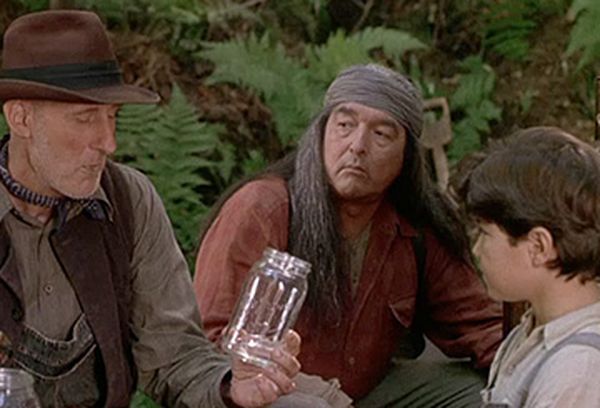Made in 1997, “The Education of Little Tree” is the story of a half-Cherokee boy who goes to live with his hill-folk grandparents in the Appalachians after his father was killed in the First World War, and his mother dies shortly thereafter.
Joseph Ashton evocatively plays the eight-year-old boy. James Cromwell masterfully plays Grandpa, and Tantoo Cardinal, exuding indigenous authenticity and wisdom, plays Gramma. Graham Greene, from “Dances With Wolves” fame, is cast as Willow John, a full-blooded Cherokee and friend of the grandparents.
<center><iframe width="560" height="315" src="https://www.youtube.com/embed/MIx7QcNiA_Q" frameborder="0" allow="accelerometer; autoplay; encrypted-media; gyroscope; picture-in-picture" allowfullscreen></iframe></center>Tantoo Cardinal was also in “Dances With Wolves,” playing the wife of the shaman, or “holy man” that was a central character in the movie. There’s a big difference between the perspectives of the two movies however.
Whatever its merits and demerits, “Dances With Wolves” was told from the perspective of a white man as he’s enculturated into the ways of the Plains Sioux. The “Education of Little Boy” is told from an indigenous perspective, as the boy learns how to be a human being in a brutal white man’s world.
For those who don’t know the history of the Trail of Tears, when the Cherokee were marched from their homelands westward to undesirable lands, dying by the hundreds along the way, it is told by the Willow John character with tremendous clarity and emotional force in this movie. That scene alone makes the movie worth watching.
From a universal spiritual perspective, the most important scene of the movie occurs after Grandpa has been bitten on the hand by a rattlesnake while saving Little Tree. As his life hangs in the balance, the boy asks if he’s going to die.
“Well now Little Tree,” his Cherokee grandmother responds, “there’s all kinds of dying. I’ve seen people down in the settlement walking around just like you and me. But they’re just as good as dead. They spend their lives in meanness and greed. And the spirit inside of them went and shrunk down to no bigger than the size of a pea.”
That echoes perhaps the most shocking utterance of Jesus, in one of the few parables that resound with undeniable authenticity, though scholars have argued over his meaning for centuries.
“And as they were traveling along the road, he said to a certain man, ‘Follow me.’ And the man said, ‘Let me first go and bury my father.’ But Jesus said to him, ‘Let the dead bury their dead.’”
Jesus’ meaning could not be clearer. He was simply saying, ‘Let the inwardly dead bury the physically dead.’ This alone attests that Jesus lived in a culture much like America today.
In the same scene when the life of Little Tree’s grandfather hangs in the balance, his grandmother says, “The only way to make your spirit big is to work on it. You got to use it to understand. The more you try to understand, the bigger it gets, till it gets so big and powerful you come to understand everything.”

Shortly after, Little Tree is taken by the State and placed in a penitentiary-like Indian school. He makes an innocent comment in class about a male and female deer preparing to mate, and is beaten and placed in solitary confinement for a lengthy period.
Sensing his suffering, his grandfather travels to the school and surreptitiously frees him under the cover of night. After returning to their home in the mountains, they stand overlooking the spectacular hills and valleys. As he does every morning, grandfather says, at the birth of a new day, “She’s coming alive.”
Grandpa is white, but tells Little Tree that after he married his grandmother, he “began to see the world the Cherokee way, till at last I come to understand the way.”
It is the way of understanding, which is not romantic or idealistic, but the only way ahead and out of this hellish age.
The dead have the illusory safety and security of the herd in life, but they are alone in death. Whereas those who “move closer to the understanding are still together in death, their spirits knowing.”
Martin LeFevre
No comments:
Post a Comment